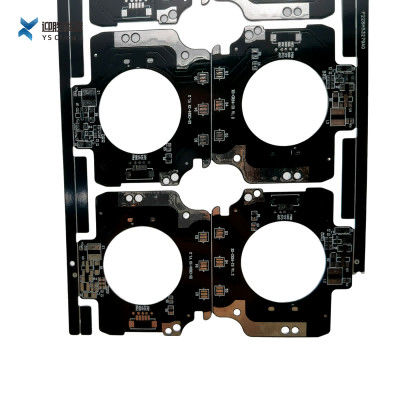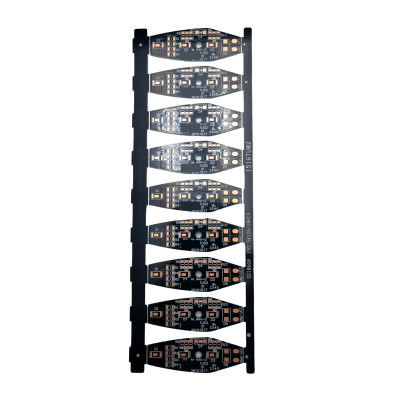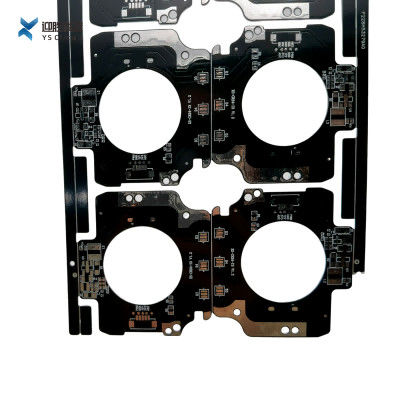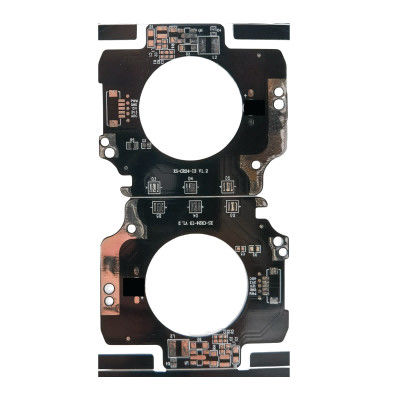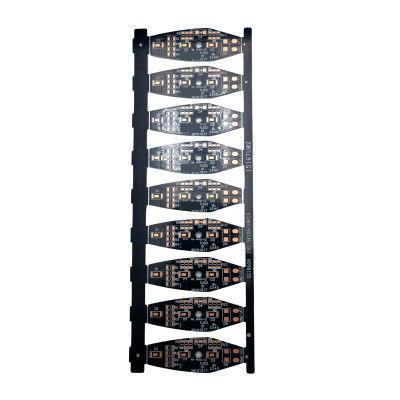Immersion Sliver Aluminum PCB Board , 94v0 Circuit Board For LED Smd Lighting
| Place of Origin | Shenzhen |
|---|---|
| Brand Name | YScircuit |
| Certification | ISO9001,UL,REACH, RoHS |
| Model Number | YS-AL-0002 |
| Minimum Order Quantity | 1 piece |
| Price | 0.03-6$/piece |
| Packaging Details | Foam cotton + carton + strap |
| Delivery Time | 2-8 days |
| Payment Terms | T/T,PayPal, Alibaba pay |
| Supply Ability | 251,000 square meter/year |

Contact me for free samples and coupons.
Whatsapp:0086 18588475571
Wechat: 0086 18588475571
Skype: sales10@aixton.com
If you have any concern, we provide 24-hour online help.
x| Material | Aluminum | Size | According To Customer Request |
|---|---|---|---|
| Process | Immersion Gold/sliver | Surface Finishing | HASL/HASL-LF/ENIG |
| High Light | Immersion Sliver Aluminum PCB Board,94v0 Aluminum PCB Board,LED 94v0 Circuit Board |
||
LED smd lighting Aluminum PCB board 94v0 PCB PCBA manufacture PCB assembly
Why is Aluminium Used in Circuit Boards?
Aluminum can actually transfer heat away from vital components, thus minimizing the harmful effect it could have on the circuit board. Higher durability: Aluminum provides strength and durability to a product that ceramic or fiberglass bases cannot.
Structure of Aluminum PCB
Aluminum PCBs are aluminum based CCLs (CCL is a type of base material of PCBs). AluminumPCBs are actually quite similar to FR4 PCBs. The basic structure of Aluminum PCBs is four layered. It consists of a layer of copper foil, a dielectric layer, an aluminum base layer and aluminum base membrane.
Copper Foil Layer: the copper layer used is relatively thicker than normal CCLs ( 1oz-10oz). A thicker layer of copper means a larger current carrying capacity.
Dielectric Layer: the Dielectric layer is a thermally conductive layer and is around 50μm to 200μm thick. It had a low thermal resistance and it suitable for its application.Aluminum Base: The third layer isthe aluminum base which is made up of aluminum substrate. It has a high thermal conductivity.Aluminum Base Membrane Layer: Aluminum base membrane is selective. It has a protective role by keeping the aluminum surface safe from scraping and unwanted etching. It is of two types i.e. Lower than 120 degree or around 250 degrees (anti high temperature).
| YS Aluminum PCB manufacturing capabilities overview | |
| Feature | capabilities |
| Layer Count | 1-4L |
| Thermal Conductivity(w/m.k) | Aluminum PCB:0.8-10 |
| Copper PCB:2.0-398 | |
| Board Thickness | 0.4mm-5.0mm |
| copper Thickness | 0.5-10OZ |
| Minimum line Width and Space | 0.1mm/0.1mm(4mil/4mil) |
| Speciality | Countersink,Counterbore drilling.etc. |
| Types of Aluminum Substrates | 1000 series;5000 series;6000 series,3000 series.etc. |
| Min mechanical Drilled Size | 0.2mm(8mil) |
| Surface Finish | HASL, Lead free HASL,ENIG,Immersion Tin, OSP, Immersion Silver, Gold Finger, Electroplating Hard Gold, Selective OSP,ENEPIG.etc. |
| Solder Mask | Green, Red, Yellow, Blue, White, Black, Purple, Matte Black, Matte green.etc. |
| layer/m² | S<1㎡ | S<3㎡ | S<6㎡ | S<10㎡ | S<13㎡ | S<16㎡ | S<20㎡ | S<30㎡ | S<40㎡ | S<50㎡ | S<65㎡ | S<85㎡ | S<100㎡ |
| 1L | 4wds | 6wds | 7wds | 7wds | 9wds | 9wds | 10wds | 10wds | 10wds | 12wds | 14wds | 15wds | 16wds |
| 2L | 4wds | 6wds | 9wds | 9wds | 11wds | 12wds | 13wds | 13wds | 15wds | 15wds | 15wds | 15wds | 18wds |
| 4L | 6wds | 8wds | 12wds | 12wds | 14wds | 14wds | 14wds | 14wds | 15wds | 20wds | 25wds | 25wds | 28wds |
| 6L | 7wds | 9wds | 13wds | 13wds | 17wds | 18wds | 20wds | 22wds | 24wds | 25wds | 26wds | 28wds | 30wds |
| 8L | 9wds | 12wds | 15wds | 18wds | 20wds | 20wds | 22wds | 24wds | 26wds | 27wds | 28wds | 30wds | 30wds |
| 10L | 10wds | 13wds | 17wds | 18wds | 20wds | 20wds | 22wds | 24wds | 26wds | 27wds | 28wds | 30wds | 30wds |
| 12L | 10wds | 15wds | 17wds | 18wds | 20wds | 20wds | 22wds | 24wds | 26wds | 27wds | 28wds | 30wds | 30wds |
| 14L | 10wds | 16wds | 17wds | 18wds | 20wds | 20wds | 22wds | 24wds | 26wds | 27wds | 28wds | 30wds | 30wds |
| 16L | 10wds | 16wds | 17wds | 18wds | 20wds | 20wds | 22wds | 24wds | 26wds | 27wds | 28wds | 30wds |
30wds |
![]()
![]()
![]()
![]()
![]()
WHAT IS AN ALUMINUM PCB?
A PCB generally consists of three layers. A conductive copper layer at the top, a dielectric layer in between, and a layer of a substrate at the bottom. Standard PCBs have a substrate layer made of fiberglass, ceramic, polymers, or any other non-metal core. An ample amount of PCBs uses FR-4 as the substrate.
Aluminum PCBs use an Aluminum substrate. Instead of standard FR-4 as the substrate material.
Circuit Copper Layer
This layer transmits signals over the entire PCB board.
The movement of charged particles generates heat.
This heat is transferred to the Aluminum substrate. Which dissipates it efficiently.
Insulating Layer
This layer is also known as the dielectric layer.
It is made of materials that are poor conductors of electricity.
It absorbs the heat generated in the above layer. And transfer it to the Aluminum substrate below it.
Substrate
The substrate acts as a foundation for the PCB.
It firmly holds the components above it. By changing the characteristics of the substrate, the performance of PCB varies.
For example, a rigid substrate provides strength and durability to the PCB board.
While a flexible substrate opens up more design options.
The aluminum substrate is used in power electronics-based applications where high thermal dissipation is required.
Due to its good thermal conductivity, it keeps heat away from vital electronic components. Thus ensuring minimal circuit damage.
ALUMINUM PCBs MANUFACTURED AT YScircuit
YScircuit is one of the finest manufacturers of Aluminum PCBs.
To increase the overall performance of the product, they provide a thermal clad layer to the Aluminum PCB.
It dissipates heat in a highly efficient manner. For high power and tight tolerance based applications Aluminum Backed PCB is the perfect choice among project makers.
Considering parameters like the coefficient of thermal expansion, thermal conductivity, strength, hardness, weight, and cost. Aluminum plate is an ideal choice for your project. You can modify your PCB substrate. PCBWay offers different Aluminum plates like 6061, 5052, 1060, and many more.
ADVANTAGES OF ALUMINUM PCB
1. The heat dissipation capacity of Aluminum PCBs is far better than standard PCBs.
2. Aluminum PCBs provide more strength and durability. As compared to ceramic and fiberglass-based PCBs.
3. It seems ironic, but aluminum-based PCBs are lighter. As compared to standard PCBs.
4. Thermal expansion and contraction of PCB components get reduce by using Aluminum PCB.
5. PCBs made of Aluminum are environmentally friendly. It is non-toxic and recyclable. It does not create any harmful impacts on our planet.
6. The assembling process of Aluminum PCB is easy than that of standard PCB.




